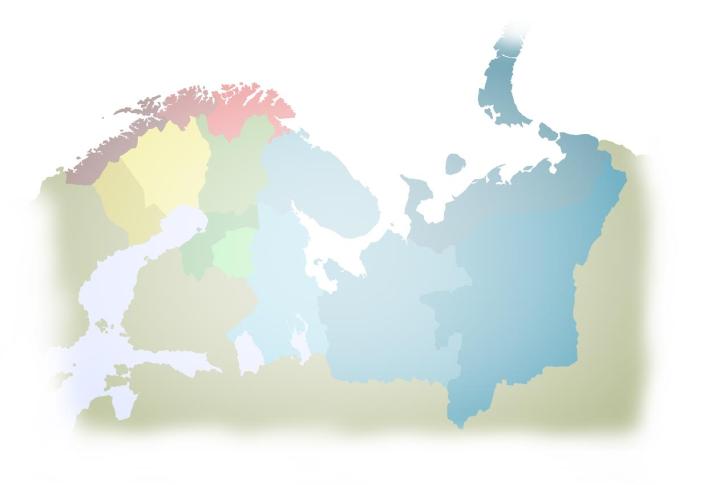Barents Regional Youth Council - a hope for the future
Barents Regional Youth Council, also known as BRYC, is not as old as the Barents cooperation itself, but with an startup in 2004 it is full of history.
The project started because one realized that a lot of the youth-related issues were common to all countries in the region. By letting youth form their own Barents Council, it would ensure that they to would have a say. Or as former representative of Norrbotten County, Johan Berglund, stated;
- .Barents Youth Council is important for the region. It gives a clear voice to young people towards the region's leaders, while it is important to point out the Council's ability as a communication channel the other way around too. Different regional politicians have trough the Council a unique opportunity to reach out to the future citizens of the Barents Region.
Former head of BRYC, and now head of the Murmansk-based organization "Barents Youth Cooperation Office", Zhanna Guzenko, agrees on how significant youths are. "It is very important to include youth in all aspects of life, whether it is politics, music, culture or business" she said to BarentsObserver two years ago. It's about motivating young people to take part in a positive change in the region, to the best of the future.
BRYC is in many ways a unique cross-border project, which has served as an inspiration to several other cross-border youth projects in the EU. The Council consists of youth representatives from all regions situated in the Barents Region. From Nordland inn the west, to Komi inn the east. From the deep forests in Kainuu, to Nenets frozen tundra. The ways of electing representatives to the Council are just as varying as the regions themselves are. Some are selected trough regional youth councils, while others are appointed by the region's regional government. But what they all have in common is the fact that they represent the youth in their regions.
The Council's goal is mainly to work for a better future among young people in the region, not only through channeling their thoughts and ideas to the real decision makers, but also through its own projects and events. The Council organizes every year a special event for young people from throughout the region, often based upon the annual priority. The Council focuses on a set of priorities every year, and for 2016 they were business development and innovation. The Council's work also consists of coordinating services for youth in the region through the spread of information and consultation for young people who are interest in working with projects in the Barents Region. Logistics and reach of information is a familiar problem in the region.
The Barents region is said to be a very diverse region on several points, including when it comes to demographics. Since the area also is populated by a number of indigenous peoples groups, such as the Saami, Nenets, Komi and Vepsians, BRYC has a permanent seat reserved for indigenous peoples. The indigenous representation in the Council has been highly valued among both the youth and within indigenous communities themselves. The Barents cooperation may have been particularly important for the Sami people, which is the only indigenous people who populate all four countries in the Barents Region.
Halvard Rundberg from Kåfjord in Nord-Troms, known for most as a member of the popular band "Violet Road," was for several years the indigenous representative in BRYC. Halvard says his time in BRYC was an experience for life. He characterizes BRYC as a pioneering and boundless cooperation, which has resulted in many memorable gatherings, events and workshops. He says that youth from four countries come closer to each other and thus really challenged themselves in the pursuit of a common Barents identity. And it seemed to him that they have succeeded very well with this challenge.
Known as a musician, it is perhaps not surprising that Halvard believes that culture is the strongest card we have in cooperation. He explains that through culture we create meeting places, where everyone can feel at home and talk freely about their visions for the Barents region. Both present and future. According to Halvard, they materialized several of these visions down to tangible goals, that they later set out to achieve. And in many cases they actually did achieve them.
- What we learned the most from, was the meetings between people, the conversations, the joyful laughter, small talks and the joy of seeing new faces, but not to forget, at the same side also getting solid insight into how international politics and diplomacy works. At this intersection between youth and adult, I think many of us got a priceless knowledge witch we took with us further. For it's there, the Barents identity, and I still think about it every day. How the boundaries between the four countries of the North is really just artificial lines on a map, and how it is up to us to nurture the good cooperation that will and should be the cornerstone of a peaceful and good neighbourhood in the north.
Halvard emphasizes how he personally has grown on the Barents Cooperation, through new friends and not least the new knowledge he gained. He describes how he got to experience the force that emerges when young people from different countries and backgrounds meet on common goals. As he himself says, "It was hefty, it was fun, it was challenging and frustrating. It was Barents ". And it is precisely as such, Halvard Rundberg want it to develop further. With positivity and culture as top priority, he believes that cooperation in the future will bring us closer together and ensure a peaceful and good life for citizens in all the four Barents countries. This will give us inspiration and energy to continue to create and to live the good life in the north.
Former Chairperson of BRYC, Sunna Kokkonen from Lapland in Finland, also emphasizes the wonderful friendship that develops across national borders.
- A good friend of mine once told me that when he sees the map of the Barents region, he dosn`t see the geography, but friends' faces.It is this the Barents Cooperation has been for me too. For me it's not about politics, but about cross-border cooperation, economic opportunities and tourism. It is about uniting people for a sustainable future together.
Sunna has in her time as Chair of BRYC seen much potential in young people and this is what makes the work so valuable. She remembers the good moments, as when a small group worked on the banning of plastic bags in stores, or when a small group of Barents-based musicians performed a self-composed song that brought the audience to tears. There is love in the Barents region, and she has most certainly felt it. But in spite of love, she remarks that there are challenges in the cooperation between the different countries, a challenge she sees the solution to.
- I think that my generation will find a way to surpass the problems we find. By remaining optimistic, work hard, while we accept and understand each other, we can create a little miracle every day.



